Antistatic, static electricity, dust and particle problems
Main menu:
Heidelberg Speedmaster
Support / Links - PDF > Applications_list
![]() Heidelberg Speedmaster 74
Heidelberg Speedmaster 74 ![]()
Static electricity is a common problem in the graphics industry where the materials used are insulators, i.e. paper, board, plastics etc, which when handled are being charged up. Distinctive of most machine parts and components which are made of conductive materials the insulators, in this case usually sheets of paper cannot dissipate static electricity. This result in doubled sheets, lost register, uneven print quality, poorly working delivery with poor stacking or malfunctions. Without antistatic equipment the problem is mainly overcome by decreasing the machine speed, which both results in lower charge buildup and to some extent may give more time for static to dissipate. A conditioned paper can improve the situation but too high air humidity will lead to corrosion attacks on machines and equipment and an unpleasant environment, while this is seldom a method to solve the whole problem.
Solution
By installing antistatic equipment in a few well defined places problems can be solved. It may be pointed out that the application example suggested is the fully equipped version which means antistatic equipment at in feed, delivery and in machines with sheet reversal also in this position. Since static problems may be present in many places at the same time but to a varying degree one can be tempted to install equipment only at e.g. the delivery to get a smaller and simpler installation (cheaper). The result is often that one finds that the problem has moved to the delivery. A reason to this is that with the first problem solved the machine speed can be increased, but only so much faster that the next problem becomes visible – thus "the problem has moved".
Infeed
At the infeed an antistatic bar ABAC11 is installed at the front of the pile to discharge every single sheet that is fed into the machine. On both sides of the infeed suction head an ionizing air blow nozzle BHAC11 is mounted, which blows ionized air into the back of the pile and above and across the top of the pile. In this way the sheets are kept uncharged during the infeed process and one can avoid doubled sheets and lost register in the grippers.
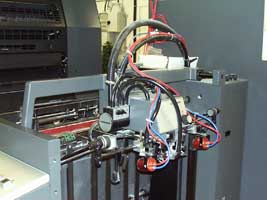
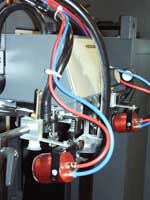
Sheet reversal
At the sheet reversal a twin row antistatic bar ABAC21 is installed since there is a need for a slightly longer active range. The purpose is to avoid smearing and abrasion which is otherwise a frequent problem due to the strong and fast movement.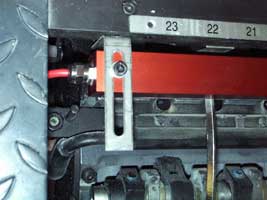
Delivery
At the delivery two antistatic bars ABAC11 are mounted, one from above the sheet and one from below. Since every sheet is discharged, sheets are going to “flow” into the delivery in a uniform way and the stacker will produce better and more evenly shaped piles. One should not disregard the positive effects of having a properly discharged pile sent to the finishing.
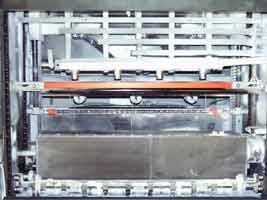
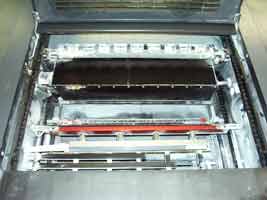
Installation
Installation is made with especially designed brackets and requires an earthed socket (or a fixed installation to the electrical cabinet of the machine) and dry and clean compressed air.

